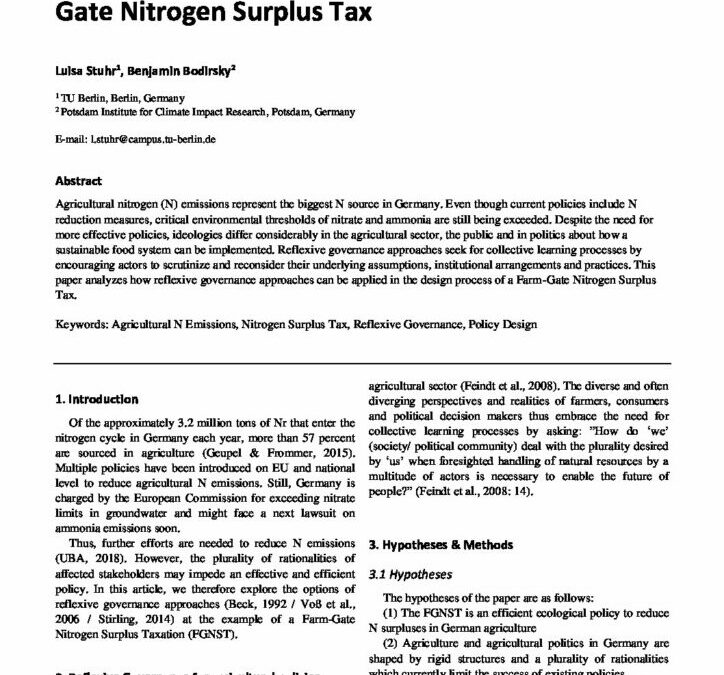A reflexive policy approach for designing a FarmGate Nitrogen Surplus Tax

Agricultural nitrogen (N) emissions represent the biggest N source in Germany. Even though current policies include N reduction measures, critical environmental thresholds of nitrate and ammonia are still being exceeded. Despite the need for more effective policies, ideologies differ considerably in the agricultural sector, the public and in politics about how a sustainable food system can be implemented. Reflexive governance approaches seek for collective learning processes by encouraging actors to scrutinize and reconsider their underlying assumptions, institutional arrangements and practices. This paper analyzes how reflexive governance approaches can be applied in the design process of a Farm-Gate Nitrogen Surplus Tax.
Of the approximately 3.2 million tons of Nr that enter the nitrogen cycle in Germany each year, more than 57 percent are sourced in agriculture (Geupel & Frommer, 2015). Multiple policies have been introduced on EU and national level to reduce agricultural N emissions. Still, Germany is charged by the European Commission for exceeding nitrate limits in groundwater and might face a next lawsuit on ammonia emissions soon. Thus, further efforts are needed to reduce N emissions (UBA, 2018). However, the plurality of rationalities of affected stakeholders may impede an effective and efficient policy. In this article, we therefore explore the options of reflexive governance approaches (Beck, 1992 / Voß et al., 2006 / Stirling, 2014) at the example of a Farm-Gate Nitrogen Surplus Taxation (FGNST).
